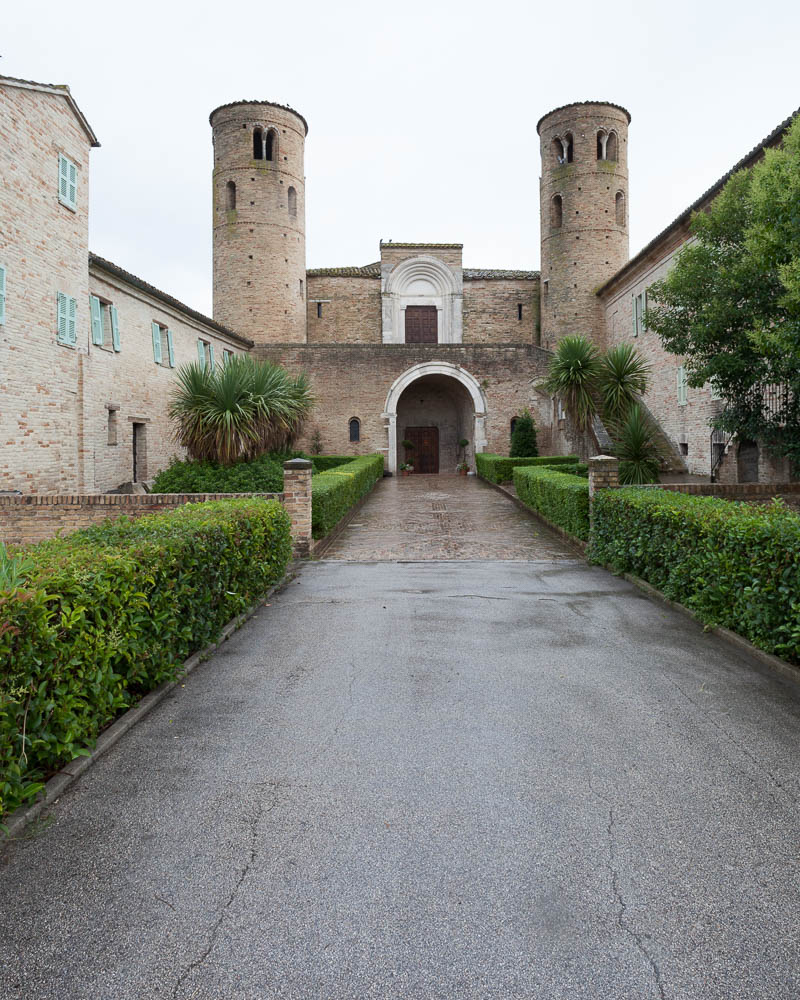
The second of the two arresting churches we visited today was San Claudio al Chienti. (For details of the first, please see previous post). San Claudio al Chienti is set in open ground on the central plain of the Chienti valley. Some time after being built it became part of an abbey which is now a hotel, so you find the church in the midst of a small hotel complex. But it is worth finding because it is one of the most interesting and unusual churches in Le Marche.
The first church on this site was built in the C8. That church was subsequently destroyed and then rebuilt in the same style in the C11, and finally restored in the 1920s. The layout and design of the church can apparently be linked to the remains of the palace of Khirbet al Mafjar, the most important archaeological site in Palestine, which was designed by Abd Allah ibn Sulaym. There is speculation that he might also have designed this church; certainly there is a very strong Arabic feel to the overall design.
From the outside the church has two cylindrical bell towers to either side of front doors at two levels which each provide entrance to an upper and lower church. The building is broadly square and to the east side the building has a series of semi-circular chapels on both floors. Internally the building is now plain with Romanesque arches and two small remaining frescoes.
There has been much speculation about how the church came to be built, with one body of opinion holding that it was constructed by Charlemagne (c.742-814). This theory holds that Charlemagne centred his palace in the Chienti valley, and that his Palatine Chapel was San Claudio al Chienti, rather than in Aachen. This thesis argues that the ‘myth’ that Charlemagne’s palace was in Aachen was created some centuries later. I am in no position to judge on the matter but if you are interested in knowing more, the place to look is www.carolingi.com.

